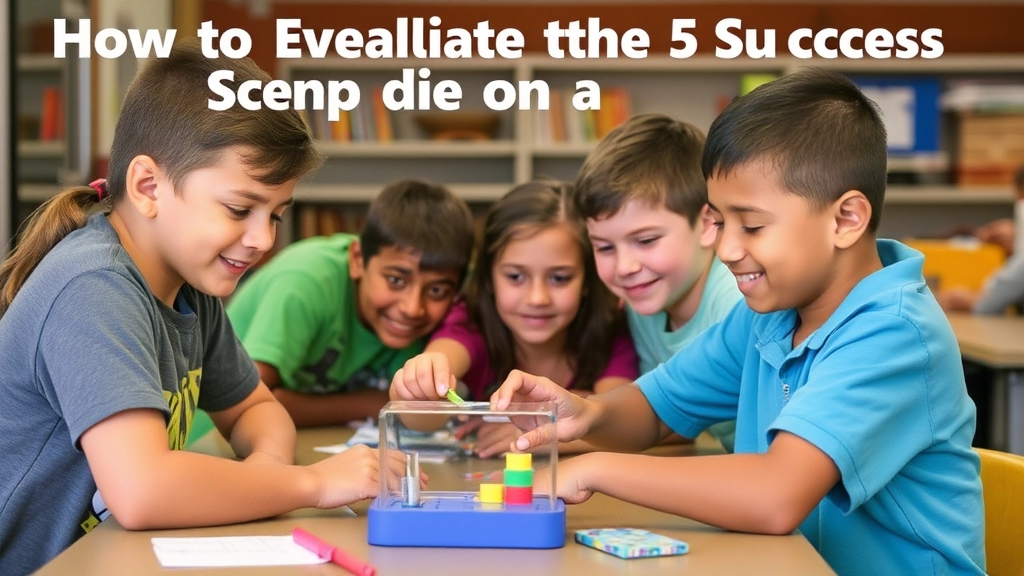Choosing the Right STEM Education Summer Camp
Choosing the right STEM Education Summer Camp can be a game-changer for your child. In this article, we’ll explore how to select the best camp tailored to your child’s interests, the myriad benefits of attending, and highlight some top camps for different age groups. From hands-on activities to expert mentorship, we’ll delve into what makes these camps unique and how to prepare your child for an enriching experience.
We’ll also provide tips on evaluating the success of the camp experience and weigh the pros and cons of virtual versus in-person camps. Whether your child is a budding scientist, a tech enthusiast, or a future engineer, this guide will help you navigate the options and make an informed decision. Get ready to unlock the potential of STEM education for your child this summer!
Choosing the Right STEM Education Summer Camp
Alright, let’s dive right in. Choosing the right STEM education summer camp for your child can feel like a daunting task. You might be asking yourself, “Will my kid actually enjoy this?” or “Is this worth the investment?” Trust me, you’re not alone. We’ve all been there, and it’s totally normal to have these questions.
What to Look for in a STEM Camp
First off, know your kid’s interests. Is your child more into robotics, coding, or maybe they have a knack for science experiments? Different camps focus on different areas of STEM, so it’s crucial to match the camp’s curriculum with your child’s passions.
Key Factors to Consider:
- Age Appropriateness: Make sure the camp is tailored to your child’s age group. A camp designed for teenagers might be too advanced for younger kids.
- Camp Duration: Some camps run for a week, while others can go on for a month. Decide what fits best into your summer schedule.
- Location: Is the camp local, or will it require travel? Local camps are convenient, but a camp further away might offer unique opportunities.
Real Stories, Real Choices
Take Sarah, for example. She was keen on coding but had zero interest in science experiments. Her mum found a camp specialising in Python programming for kids her age. By the end of the summer, Sarah had built her own simple game and couldn’t stop talking about her next coding project.
Check the Camp’s Credentials
You wouldn’t want to send your kid to a dodgy camp, right? So, do a bit of homework:
- Read Reviews: Look at what other parents and kids are saying. Websites like Trustpilot or Google Reviews can be gold mines for honest feedback.
- Check the Staff: Are the instructors qualified? Do they have experience working with kids? A camp led by industry professionals can make a world of difference.
The Extras Matter
Sometimes, it’s the little things that can make or break a camp experience:
- Hands-On Activities: Kids learn best by doing. Make sure the camp offers plenty of hands-on projects rather than just lectures.
- Field Trips and Guest Speakers: These can add an extra layer of excitement and learning. Imagine your kid coming home after meeting a real scientist or visiting a tech lab!
Budgeting: Is It Worth It?
Let’s talk money. STEM camps can be pricey, but think of it as an investment in your child’s future. Look for camps that offer scholarships or financial aid if budget is a concern.
Pro Tip:
- Early Bird Discounts: Many camps offer discounts if you book early. Keep an eye out for these deals to save some cash.
For more insights on the financial aspect, check out our guide on average summer camp costs and budget tips. And if you’re looking for some creative inspiration for camp activities, don’t miss our article on summer camp craft ideas for all ages.
Benefits of Attending a STEM Summer Camp

Ever wondered if a STEM summer camp is worth it?
I get it.
You want your child to have a productive summer, but you also want them to have fun.
Let’s break down the benefits.
1. Hands-On Learning
STEM camps are all about doing, not just listening. Kids get to play with robots, code games, and even conduct experiments. It’s like school, but way cooler.
2. Boosts Problem-Solving Skills
When kids tackle STEM challenges, they learn to think on their feet. They’ll face problems and figure out solutions. This isn’t just good for science class; it’s a life skill.
3. Encourages Teamwork
Most activities are group-based. Your child will learn to work with others, share ideas, and collaborate. These are skills they’ll need in any career.
4. Fosters Creativity
STEM isn’t just about numbers and formulas. It’s about thinking outside the box. Your child will get to be creative and innovative.
5. Builds Confidence
When kids solve a problem or finish a project, they feel accomplished. This boosts their confidence in their abilities.
6. Exposure to Future Careers
STEM camps often bring in professionals. Kids can see what a career in tech, engineering, or science looks like. It’s never too early to get inspired.
7. Keeps the Brain Active
Summer brain drain is real. STEM camps keep your child’s mind sharp, so they’re ready for the next school year.
8. Fun and Engaging
Let’s be honest. Kids won’t stick with something unless it’s fun. STEM camps mix learning with play, making it a win-win.
Real Stories, Real Impact
Take Jamie, a 12-year-old who attended a STEM camp last summer. He came back with a newfound love for coding. Now, he’s building his own apps.
Or Sarah, who discovered a passion for environmental science and is now part of her school’s eco-club.
In Summary
STEM summer camps offer a mix of fun and learning. They build skills that last a lifetime. If you’re on the fence, think about the long-term benefits. Your child will thank you later.
Top STEM Summer Camps for Different Age Groups
Worried about finding the right STEM summer camp for your child? You’re not alone. With so many options, it can feel like navigating a maze. Let’s break it down so you can choose the best fit for your child’s age and interests.
Why Age Matters
Choosing a camp based on your child’s age isn’t just about maturity. It’s about finding a programme that matches their learning style and keeps them engaged. STEM camps are designed to cater to different developmental stages, so understanding this is key.
Camps for Young Explorers (Ages 5-8)
For the little ones, the focus is on fun and discovery. These camps often include:
- Hands-on experiments: Think slime-making or simple robotics.
- Story-based learning: Using storytelling to introduce basic science concepts.
- Creative technology: Simple coding games and apps.
Example: My niece attended a camp where she built a mini volcano. She loved it and learned about chemical reactions without even realising it.
Camps for Curious Minds (Ages 9-12)
At this stage, kids are ready to dive deeper. Look for camps that offer:
- Project-based learning: Building rockets or designing video games.
- Team challenges: Encouraging collaboration and critical thinking.
- Introduction to programming: Using platforms like Scratch or Python.
Example: A friend’s son participated in a camp where they built a robot to complete a maze. It sparked his interest in engineering.
Camps for Teen Innovators (Ages 13-18)
Teens are ready to tackle more complex topics. Here’s what to look for:
- Advanced coding and robotics: Workshops using Arduino or Raspberry Pi.
- Real-world applications: Solving real problems with tech solutions.
- Career exploration: Meeting professionals and visiting tech companies.
Example: My neighbour’s daughter attended a camp that partnered with a local university. She got to work in a lab and see what a career in biotech could look like.
Finding the Right Fit
When selecting a camp, consider:
- Location and duration: Is it nearby? Does the schedule fit your summer plans? Check out some summer camps available in DeSoto, TX for local options.
- Cost: Are there scholarships or financial aid available? Learn about how to secure funding for summer camps.
- Reviews and recommendations: Talk to other parents or check online reviews.
In-Person vs. Virtual Camps
With the rise of virtual learning, you might wonder if an online camp is just as good. Here’s a quick comparison:
- In-Person: Offers hands-on experiences and social interaction.
- Virtual: More flexible and often more affordable. Great for tech-savvy kids.
Key Activities and Curriculum in STEM Camps

Ever wondered what your child will actually do at a STEM camp?
I get it.
You want to know if it’s worth the investment.
Let’s dive into the nitty-gritty.
Hands-On Activities
STEM camps are all about hands-on learning.
No boring lectures here.
Kids get to build, create, and experiment.
Think of it like this:
- Robotics: Building and programming robots.
- Coding: Learning to code games or apps.
- Engineering Projects: Constructing bridges or roller coasters with everyday materials.
- Science Experiments: Mixing chemicals to see reactions.
These activities make learning fun and practical.
Real-World Applications
Kids don’t just learn theory.
They see how it applies to the real world.
For example:
- Environmental Science: Understanding ecosystems by exploring local parks.
- Astronomy: Using telescopes to observe the night sky.
- Math in Action: Solving real-world problems with math.
It’s all about connecting the dots.
Collaboration and Teamwork
STEM camps also focus on teamwork.
Kids work in groups to solve problems.
This builds:
- Communication Skills: Sharing ideas and listening to others.
- Leadership: Taking charge of a project.
- Problem-Solving: Working together to find solutions.
These skills are crucial for their future.
Expert Mentors
Your child will learn from the best.
STEM camps often have expert mentors.
These could be:
- University professors.
- Industry professionals.
- Experienced educators.
They provide guidance and inspiration.
Curriculum Highlights
The curriculum is designed to be engaging and educational.
Here’s what it might include:
- Daily Challenges: Fun tasks that encourage critical thinking.
- Workshops: Focused sessions on specific topics like 3D printing or AI.
- Field Trips: Visits to science museums, tech companies, or nature reserves.
- Showcase Events: Opportunities for kids to present their projects.
This keeps kids motivated and excited.
Personal Stories
Let me share a quick story.
My friend’s son attended a STEM camp last summer.
He built a robot that could navigate a maze.
He was so proud.
And guess what?
He’s now considering a career in robotics.
That’s the kind of impact these camps can have.
Tips for Preparing Your Child for STEM Camp
Alright, let’s cut to the chase. You’re probably wondering, “How do I get my kid ready for a STEM summer camp?” It’s a legit concern. You want them to dive in headfirst and make the most of the experience. So, here’s the lowdown on how to prep your child for STEM camp.
Addressing Common Concerns
First off, let’s address the elephant in the room. Your kid might be nervous. Maybe they’re worried about making friends or keeping up with the curriculum. These are real concerns, so let’s tackle them head-on.
- Talk About It: Have an open conversation about what they’re excited about and what they’re anxious about. This alone can ease a lot of their worries.
- Research Together: Check out the camp’s website, look at photos, read reviews. The more familiar they are, the less daunting it will seem.
Packing Essentials
Next up, let’s talk about what to pack. You don’t want to overdo it, but missing essentials can be a bummer.
- Tech Gear: If the camp requires a laptop or tablet, make sure it’s in working order. Don’t forget chargers!
- Clothing: Comfortable, weather-appropriate clothes are a must. STEM camps can get messy, so pack extra.
- Stationery: Notebooks, pens, and any specific tools the camp recommends. Think calculators, rulers, or even lab goggles.
Setting Expectations
Setting the right expectations can make all the difference. Here’s how:
- Daily Routine: Go over the camp’s daily schedule with your child. Knowing what to expect can ease anxiety.
- Goals: Help them set some personal goals. Maybe it’s learning a new coding language or making a new friend. Goals give them something to strive for.
- Mindset: Encourage a growth mindset. Remind them that it’s okay to make mistakes. That’s how we learn.
Practical Skills
Equip them with some practical skills before they head off.
- Basic Coding: If it’s a tech-focused camp, a little pre-camp coding practice can be a confidence booster.
- Problem-Solving: Engage them in puzzles or brainteasers. It’s fun and sharpens their analytical skills.
- Social Skills: Role-play some social scenarios. It might feel silly, but it works.
Health and Safety
Don’t overlook health and safety.
- Emergency Contacts: Make sure your child knows how to reach you or another trusted adult.
- Health Kit: Pack a small health kit with essentials like band-aids, hand sanitiser, and any medications they might need.
Stories from the Trenches
Let me share a quick story. A friend’s kid was super anxious about attending a STEM camp last summer. They did a few of these prep steps, especially focusing on setting expectations and practical skills. The kid came back not only having had a blast but also with a newfound love for robotics. Sometimes, a little prep goes a long way.
For more tips on what to pack, check out our comprehensive summer camp packing list to ensure you have all the essentials covered.
How to Evaluate the Success of a STEM Camp Experience

Alright, so your kid just wrapped up a STEM summer camp. Now what?
How do you know if it was worth it?
Did they actually learn something valuable, or was it just a glorified babysitting service?
Let’s break it down.
Key Indicators of Success
- Increased Enthusiasm for STEM
Did your child come home buzzing with excitement about science, technology, engineering, or maths?
If they’re suddenly spouting facts about the solar system or building robots out of LEGO, you’re on the right track.
- New Skills and Knowledge
Look for tangible skills they’ve picked up.
Can they code a simple game?
Did they learn how to use a 3D printer?
These are the kinds of real-world skills that show progress.
- Improved Problem-Solving Abilities
STEM camps should challenge kids to think critically and solve problems.
Ask them about any projects they worked on.
Did they face any challenges? How did they overcome them?
- Enhanced Social Skills
STEM isn’t just about tech; it’s also about teamwork.
Did your child make new friends?
Did they work on group projects?
Collaboration is a huge part of STEM fields, so this is a biggie.
- Positive Feedback from Camp Instructors
Get the lowdown from the people who ran the show.
What do the instructors have to say about your child’s performance and engagement?
Their insights can be gold.
Practical Steps for Evaluation
- Talk to Your Child
Have an open conversation.
What did they enjoy the most?
What did they find challenging?
Their feedback can give you a clear picture of their experience.
- Review Their Work
Many camps send home projects or portfolios.
Go through these with your child.
It’s a great way to see what they’ve learned and how they’ve applied it.
- Follow-Up Activities
Encourage your child to continue exploring STEM topics at home.
If they’re keen to keep learning, that’s a strong indicator the camp was a hit.
- Check for Certificates or Awards
Some camps offer certifications or awards for completing certain tasks or projects.
These can be a good measure of what your child achieved.
- Ask for a Camp Report
Some camps provide a summary report of your child’s progress and activities.
This can offer valuable insights into their strengths and areas for improvement.
Real Stories, Real Success
I remember a parent telling me about their kid who attended a coding camp.
Before the camp, the kid had zero interest in coding.
By the end, they were building their own games and even teaching their siblings how to code.
That’s the kind of transformation you’re looking for.
Virtual vs. In-Person STEM Camps: Pros and Cons
Ever wondered whether a virtual STEM camp can match up to the in-person experience?
You’re not alone.
Parents everywhere are weighing the pros and cons.
So, let’s break it down.
The Pros of Virtual STEM Camps
- Flexibility: Your child can attend from anywhere. No need to pack bags or worry about travel.
- Cost-Effective: Generally, virtual camps are cheaper. You save on travel and accommodation.
- Access to Diverse Programs: Virtual camps often bring in experts from around the world. Your child could be learning coding from a Silicon Valley whiz!
- Comfort: Kids can learn in their own space. No new environments to adapt to.
The Cons of Virtual STEM Camps
- Screen Fatigue: Too much screen time can be exhausting. It’s hard to stay engaged.
- Limited Hands-On Activities: Many STEM activities require physical tools and materials. Virtual camps might not provide these.
- Less Social Interaction: Kids miss out on face-to-face interactions, which are crucial for teamwork and social skills.
The Pros of In-Person STEM Camps
- Hands-On Learning: Nothing beats real-world experience. Building robots, conducting experiments â it’s all hands-on.
- Social Skills: Kids get to meet peers with similar interests. They learn teamwork and make friends.
- Focused Environment: No home distractions. Your child is in a dedicated learning space.
- Physical Activity: Many in-person camps include outdoor activities. It’s a break from screens and a chance to get moving.
The Cons of In-Person STEM Camps
- Cost: They can be pricey. Travel, accommodation, and camp fees add up.
- Location Constraints: Not everyone has access to quality STEM camps nearby.
- Time Commitment: In-person camps usually require a significant time commitment. Not ideal for every family’s schedule.
Real Talk: What’s Best for Your Child?
Think about your child’s learning style.
Do they thrive in a social environment? In-person might be the way to go.
Are they tech-savvy and comfortable with online learning? Virtual could be a perfect fit.
Consider your budget and schedule.
What’s feasible for your family?
Bottom Line
Both virtual and in-person STEM camps have their pros and cons.
The key is to match the camp with your child’s needs and your family’s circumstances.
Still unsure?
Why not try a short virtual camp first?
It’s a low-risk way to test the waters.
Remember, the goal is to spark your child’s interest in STEM.
Whether that happens online or in-person, what matters is that they’re learning and having fun.
For more detailed guidance on choosing the right camp, check out our Top STEM Summer Camps for Kids and our comprehensive Engaging Summer Camp Curriculum Guide.
Frequently Asked Questions about STEM Education Summer Camps
What are the main benefits of attending a STEM summer camp?
STEM summer camps offer a range of benefits including hands-on learning, improved problem-solving skills, teamwork, creativity, confidence building, exposure to potential careers, and keeping the brain active during the summer. Plus, they are fun and engaging.
What types of activities can my child expect at a STEM camp?
Children can expect a variety of hands-on activities such as building and programming robots, coding games or apps, conducting science experiments, and working on engineering projects. These activities make learning both fun and practical.
How do STEM camps help in real-world applications?
STEM camps connect theoretical knowledge to real-world applications. For example, kids might explore local ecosystems for environmental science, use telescopes for astronomy, or solve real-world problems with math. This helps them see the relevance of what they are learning.
Will my child work in groups or individually?
Most activities in STEM camps are group-based. This helps children develop communication skills, leadership, and teamwork. They will learn to share ideas, collaborate, and solve problems together.
Who teaches at STEM camps?
STEM camps often feature expert mentors including university professors, industry professionals, and experienced educators. These mentors provide valuable guidance and inspiration.
What makes the curriculum at STEM camps engaging?
The curriculum is designed to be both engaging and educational. It may include daily challenges, focused workshops, field trips, and showcase events where kids can present their projects. This keeps children motivated and excited to learn.
How can I evaluate the success of my child’s STEM camp experience?
Key indicators of success include increased enthusiasm for STEM, new skills and knowledge, improved problem-solving abilities, enhanced social skills, and positive feedback from camp instructors. You can also talk to your child, review their work, and check for any certificates or awards they received.
Are there any real success stories from STEM camps?
Yes, there are many success stories. For instance, a child might return from camp with a newfound love for coding and start building their own apps, or discover a passion for environmental science and join their school’s eco-club. These camps can have a transformative impact.
References
-
How STEM Summer Camps Benefit Students
-
Why STEM Camps Are Important
-
Why STEM Summer Camps Are Worth It

